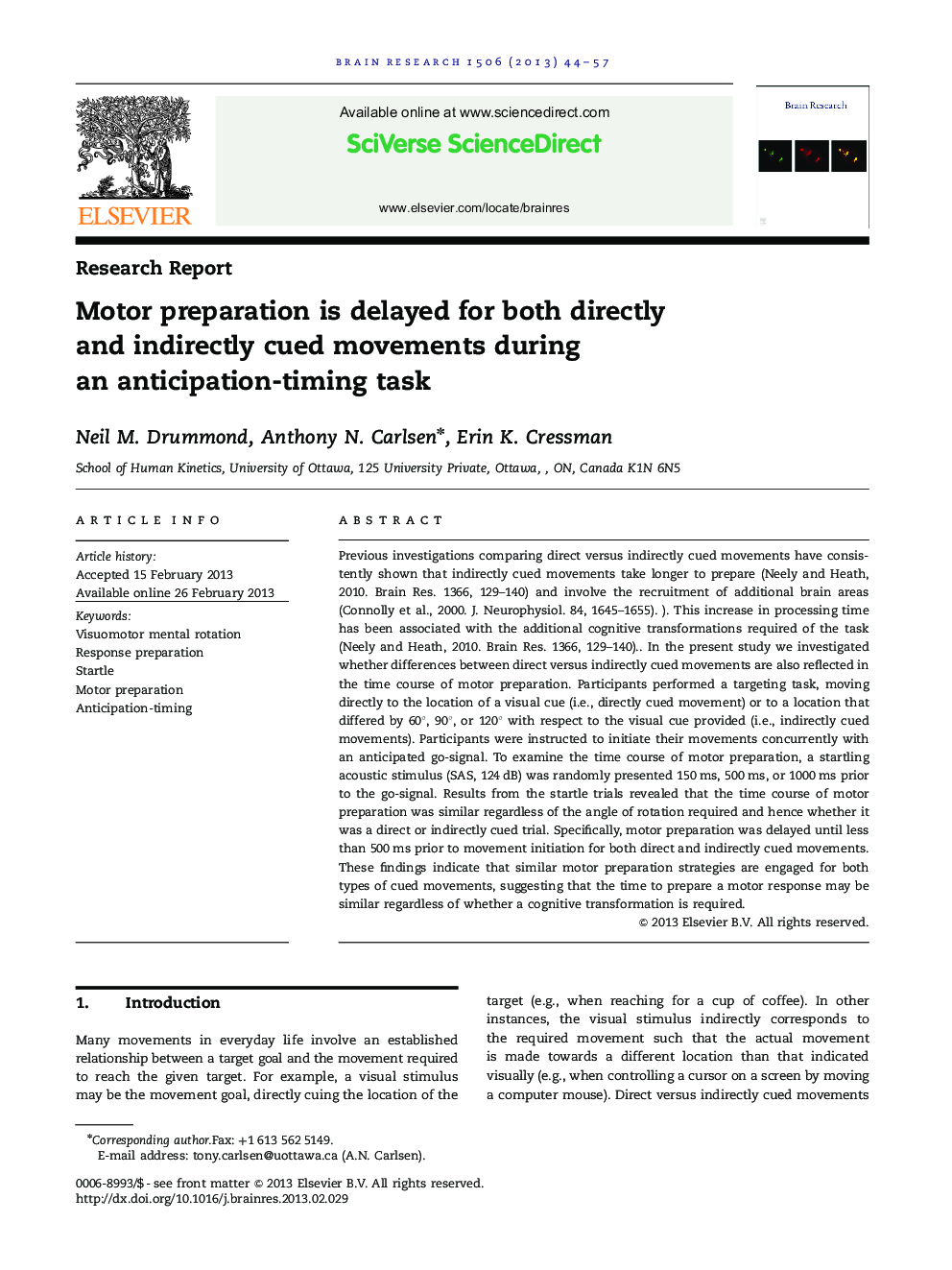| Article ID | Journal | Published Year | Pages | File Type |
|---|---|---|---|---|
| 6263929 | Brain Research | 2013 | 14 Pages |
Previous investigations comparing direct versus indirectly cued movements have consistently shown that indirectly cued movements take longer to prepare (Neely and Heath, 2010. Brain Res. 1366, 129-140) and involve the recruitment of additional brain areas (Connolly et al., 2000. J. Neurophysiol. 84, 1645-1655). ). This increase in processing time has been associated with the additional cognitive transformations required of the task (Neely and Heath, 2010. Brain Res. 1366, 129-140).. In the present study we investigated whether differences between direct versus indirectly cued movements are also reflected in the time course of motor preparation. Participants performed a targeting task, moving directly to the location of a visual cue (i.e., directly cued movement) or to a location that differed by 60°, 90°, or 120° with respect to the visual cue provided (i.e., indirectly cued movements). Participants were instructed to initiate their movements concurrently with an anticipated go-signal. To examine the time course of motor preparation, a startling acoustic stimulus (SAS, 124 dB) was randomly presented 150 ms, 500 ms, or 1000 ms prior to the go-signal. Results from the startle trials revealed that the time course of motor preparation was similar regardless of the angle of rotation required and hence whether it was a direct or indirectly cued trial. Specifically, motor preparation was delayed until less than 500 ms prior to movement initiation for both direct and indirectly cued movements. These findings indicate that similar motor preparation strategies are engaged for both types of cued movements, suggesting that the time to prepare a motor response may be similar regardless of whether a cognitive transformation is required.
⺠We compared the time of motor preparation for direct and indirectly cued movements. ⺠A startling stimulus was used to probe motor preparation prior to the go signal. ⺠On all trials, motor preparation was delayed until just prior to the go signal. ⺠Direct and indirectly cued movements were prepared with a similar time course.
